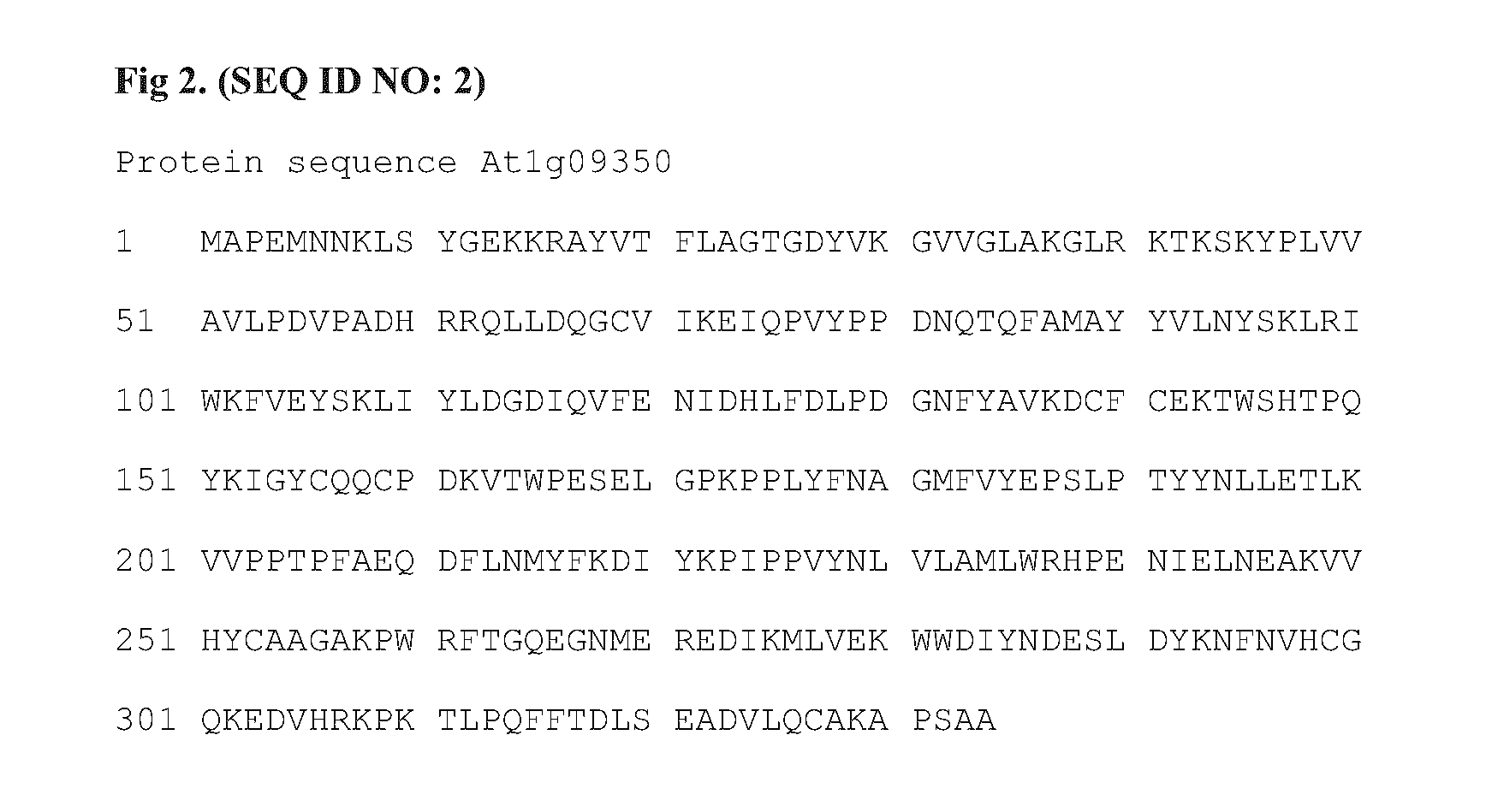Enhancing cell wall properties in plants or trees
a cell wall and cell wall technology, applied in the direction of cellulose treatment using microorganisms/enzymes, ligases, bio-feedstock, etc., can solve the problem that production is not likely the best long-term strategy, and achieve the effects of enhancing cell wall properties, and enhancing the cell wall property of plants
- Summary
- Abstract
- Description
- Claims
- Application Information
AI Technical Summary
Benefits of technology
Problems solved by technology
Method used
Image
Examples
example 1
Overexpression of the AtGolS3 Gene in Hybrid Poplar
Plasmid Construction
[0120]The A. thaliana GolS3 (At1g09350) which was previously shown to be cold inducible (Taji et al. 2002) was cloned from cDNA from Columbia ecotype using primers:
AtGolS3.Fw(SEQ ID NO. 14)5′-CGCGGATCCATGGCACCTGAGATGAACAACAAGTTG-3′andAtGolS3.Rv(SEQ ID NO. 15)5′-CGCGAGCTCCTGGTGTTGACAAGAACCTCGCTC-3′.
The galactinol synthase transformation vector was constructed by ligating the cloned AtGolS3 gene using the BamHI and SacI restriction enzymes. Once the vector was confirmed by sequencing, it was transformed into Agrobacterium tumefasciens C58 strain. Suitable transformation vectors are for example pbin, pBinPlus, pBI, pMDC or pRT (Lee and Gelvin in Plant Physiology, Plant Physiology 146:325-332, 2008).
Agrobacterium Transformation
[0121]The transformation was done using the ‘freeze-thaw’ method for direct Agrobacterium transformation (Cellfor Inc., Vancouver, BC). Colonies that grew on the selection medium (i.e., 50 mg l...
PUM
| Property | Measurement | Unit |
|---|---|---|
| Density | aaaaa | aaaaa |
| Crystallinity | aaaaa | aaaaa |
Abstract
Description
Claims
Application Information
 Login to View More
Login to View More - R&D
- Intellectual Property
- Life Sciences
- Materials
- Tech Scout
- Unparalleled Data Quality
- Higher Quality Content
- 60% Fewer Hallucinations
Browse by: Latest US Patents, China's latest patents, Technical Efficacy Thesaurus, Application Domain, Technology Topic, Popular Technical Reports.
© 2025 PatSnap. All rights reserved.Legal|Privacy policy|Modern Slavery Act Transparency Statement|Sitemap|About US| Contact US: help@patsnap.com



